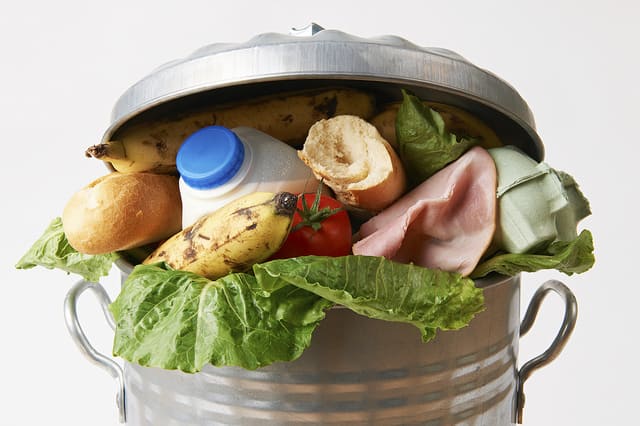Advantages and Disadvantages of Integrated Pest Management

The agricultural industry is currently one of the most valuable and important industries globally. Without the agricultural industry progressing and flourishing, the world will experience a plague of famine, starvation, death, and other horrible occurrences.
As a result, several advancements and developments have to be made to the agricultural industry to ensure it is able to cater to the growing needs of the population. One of the ways to ensure the agricultural industry remains relevant and flourishing is the introduction of Integrated Pest Management (IPM).
What is Integrated Pest Management?
Integrated Pest Management is the process of minimizing the damages caused by pests to agricultural products with little risk to humans and the environment. It is a system used to manage and eliminate all kinds of pests in every location, urban areas, wildland, natural areas, and agricultural areas.
Integrated Pest Management is an ecosystem-based strategy that focuses on preventing the activities of pests and their damage for a long time by combining various techniques, including habitat manipulation, biological control, use of resistant varieties, and cultural practices modification.
Integrated Pest Management programs utilize recent and comprehensive information on the lifecycle of pests and their activities to develop effective ways of curbing them by combining different pest control methods with the least possible threat to humans, property, and the environment.
IPM is not used for only agricultural settings; it can also be used for non-agricultural settings like home, workplace, and gardens. The “Integrated” in IBM refers to the harmonious use of various methods to control pests activities.
The “Pest” refers to any organism whose activity is detrimental to humans. The “Management” is the set of decisions that make up the plan to control pests. So, when you bring these three words together, you get a glimpse into what IBM stands for. Before we go further, we will look at pests.
A pest is an organism whose activity causes damage or interferes with plants in fields, wildlands, orchards, landscapes, homes, and other structures. A pest is also an organism that can negatively impact the health of a human or an animal; pests may transmit disease or be a nuisance.
Pests can either be vertebrae (rodents, birds, and mammals), plants (weed), pathogens (virus, bacteria, fungus), invertebrae (tick, insect, snail, mite), or nematodes. These organisms cause diseases or their activities can harm the quality of water, animal life, and other parts of the ecosystem.
How Does Integrated Pest Management Work?
Integrated Pest Management is focused on managing the ecosystem to prevent long-term pets damages. Implementing IPM is the best way to eliminate pests and their hazardous activities; the crops are healthy enough to repel and withstand pest attacks and are also resistant to diseases and infections.
The previous pest prevention methods have been effective but also harmful to the environment and human health. But with IPM, pests are eradicated, and no damage is caused to the environment.
In determining the best Integrated Pest Management System to use, the first thing is to monitor and identify the pest. Monitoring involves checking the area (landscape, field, building, or forest) to identify the pests there, the total number of pests, and the extent of damage caused.
It is important to identify the pest present because only then can you know if the pest is or will be a problem and the best IPM strategy to curb it. After identifying the pest and estimating the biological and environmental damage, you can decide if it can be tolerated or must be controlled.
There are four steps involved in implementing Integrated Pest Management; they are; identifying and monitoring pests, setting action thresholds, prevention, and control. We will look at these steps.
1. Identifying And Monitoring Pests
We talked about this step earlier; it involves identifying the pests in the area to determine the best pest control method. Not all weeds, insects, and living organisms are harmful and require control. Identification and monitoring eradicate pesticides when it is not needed or using the wrong pesticide.
2. Setting Action Thresholds
This is the second step in IPM; before any pest control method can be implemented, an action threshold must be set first. This is studying the pest population and environmental conditions to identify the best pest control method.
If only a single pest is found, pest control may not be needed. Until the pests sighted are enough to become an economic threat, IPM is not usually the best option.
3. Prevention
The first thing IPM seeks to accomplish is managing the area and preventing the pests from becoming an environmental and economic threat. Different cultural methods will be used for a farm, including rotating between different crops, planning pest-free roots, and using only pest-resistant varieties.
These methods are usually very effective, cost-efficient, and cause little risk to people and the environment.
4. Control
After action threshold, monitoring, and identification have been conducted to know that pest control is necessary since preventative methods will not be effective, the best pest control method will be decided for reduced risk and more effectiveness.
Less risky pest control methods are first implemented. If after further monitoring, identification, and action thresholds show that the less risky pest control methods are not effective, additional control methods will be used.
Examples of Integrated Pest Management
Although there are different pest control methods employed in IPM, the most effective and long-lasting way to manage and control pests is by combining various methods.
The approaches for managing pests are grouped into four categories; chemical approach, biological approach, mechanical/physical approach, and cultural approach.
1. Chemical Approach
This is the use of pesticides to control pests. Pesticides are used only when essential and in combination with other approaches for more effective and long-term control. The pesticides used are selected and applied to minimize harm to humans, other organisms, and the environment.
There are three different types of pesticides: natural pesticides, traditional pesticides, and preventative pesticides. Natural pesticides are extracts from various plants, including neem oil (extracts from neem trees) or pyrethrins. Natural pesticides are usually organic and are non-synthetic.
Traditional pesticides are produced from synthetic products, and preventative pesticides are used to treat fungal diseases and prevent them from spreading.
2. Biological Approach
All pests, including invertebrates, nematodes, plant pathogens, vertebrates, and weeds, have natural enemies. The biological approach is the use of the pests’ natural enemies, including parasites, predators, competitors, and pathogens, to control the pests and their damages.
Predator insects like adult lady beetles and their larvae feed on aphids voraciously. Green lacewing larvae feed on various pests, including whiteflies, mealybugs, thrips, and mites. Parasitic insects like wasps lay their eggs in and in their living targets. When the eggs hatch, they feed inside the pests.
Biological pathogens like bacillus thuringiensis, a soil-borne bacterium that fights insects like mosquitoes in their larvae and caterpillar stages. Biological pathogens are very effective in dealing with specific pests.
3. Physical and Mechanical Approach
The physical and mechanical approach is used to block pests out, kill the pests, and make the environment inhabitable for the pests. Examples of mechanical approaches are setting traps for rodents, and the physical approach is steam sterilization of the soil, weed management, and screens to keep insects and birds out.
This method involves proactive garden and lawn control methods, including using mulch in the garden to prevent weeds from sprouting, pulling out or hoeing weeds before they establish roots, placing collars around susceptible vegetable stems, and spreading nets over the plants to stop marauding birds away.
4. Cultural Approach
This is the use of practices that reduce pest reproduction, survival, establishment, and dispersal. This approach starts with the decision to choose and care for the plants. The first line of defense is prevention, having healthy and well-nurtured plants resist diseases and pests better.
Some cultural approaches include; selecting plants suited to your area, planting pest and disease-resistant plant varieties, planting at appropriate times, choosing the best sites, maintaining the lawn and garden tools, testing the soil pH, and watering the plants early in the morning.
Advantages of Integrated Pest Management
1. Slower Growth Of Pesticide Resistance
With growing, time pests tend to develop resistance to pesticides. When chemicals are constantly sprayed or applied on the crops, natural selection helps the pests develop resistance to the pesticides. Additionally, the genes of pests that were able to survive the impact of the chemicals would be passed to the offspring.
This is how pesticide-resistant super pests are developed. However, integrated pest management has the ability to slow down the development of pesticide-resistant species. At the same time, it ensures that the crop provides desired yields.
2. Balanced Ecosystem
pesticides are a powerful way of getting rid of the pest population. But there is a huge cost associated with using pesticides; are you aware of that?
Research suggests that the toxicity of pesticides are dangerous for organisms that are not harmful to the crops. It may result in the loss of species. And these were among the keystone species; there could be serious implications to our ecosystem.
IPM does not eradicate pests; it only redirects and removes them from the area. This is essential in maintaining the balance of the ecosystem. Using pesticides will affect the environment and other non-target organisms, but implementing IPM, no damage is done.
3. Protecting The Biodiversity
As we discussed the loss of species above, it would certainly extend to the loss of biodiversity. And biodiversity encompasses various organisms living in our ecosystem. If the environment collects harmful pesticides and chemicals, it will result in disastrous loss of species from the ecosystem.
Many species that we do not even know of may be lost. Integrating pest management focuses on targeted species that are harming your garden. This way, it protects your garden as well as biodiversity.
4. Better Cost And Increased Value
Implementing Integrated Pest Management is the best way to regulate population surges in pests. It is impossible to regulate the pest population with the use of pesticides.
So, IPM is implemented at a reduced cost, and you have a better value in the long run because the regular usage of pesticides will eventually cost more than you imagine
Disadvantages of Integrated Pest Management
You need more resources in Integrated Pest Management in comparison to using pesticides. This is because IPM uses different methods and techniques.
1. Energy and Time Consuming
The application of Integrated Pest Management takes time. It requires lots of energy because it has to be monitored closely to know the best and most effective pest control method to use. There will be times when different control methods are employed to manage different pests.
2. Requires Lots of Resources
To properly and accurately implement IPM, a lot of resources are required, unlike the use of pesticides. There are various methods and techniques that will be applied, and each requires resources. So, the implementation of IPM is more expensive than using pesticides.
3. Takes a Long Time To Understand
Without proper and comprehensive understanding, implementing Integrated Pest Management will be difficult. It takes a long time to educate farmers on IPM because it is broad and complex
Conclusion
Integrated Pest Management is an economically friendly method of managing and preventing pests. It increases crop productivity while reducing the damages caused by pests using various pest control methods. IPM aims to resist pest damages while using fewer resources and low risk to humans, property, and the environment






